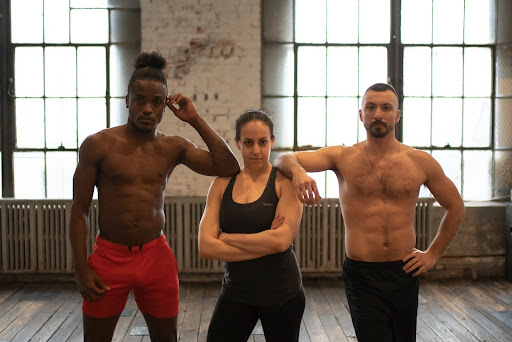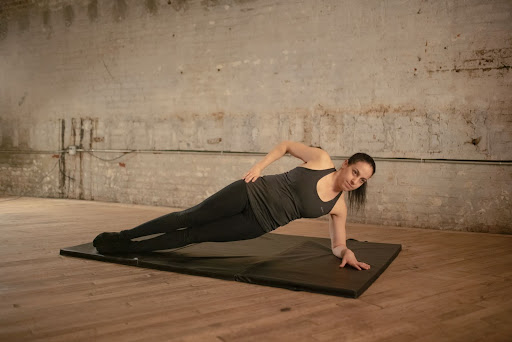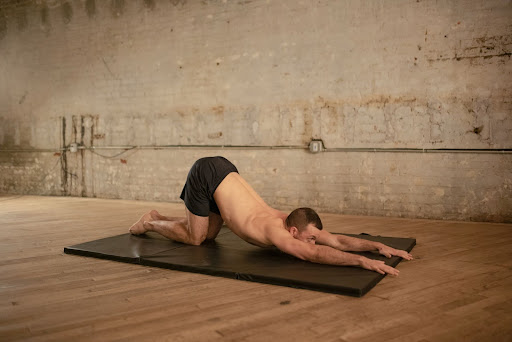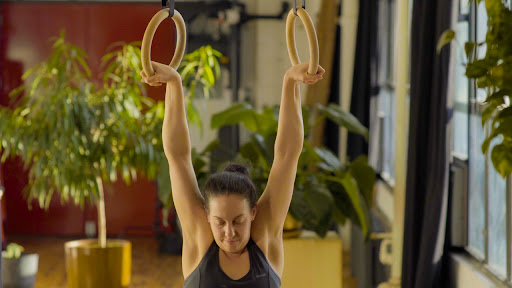When it comes to men’s vs women’s workouts, there is a lot of debate about whether or not there are any real differences. Some people believe that the only difference between the two is how much weight they can lift, while others think that men and women should have completely different workout routines. So, what is the truth? Are there really sex differences in fitness? Should men and women train differently?
⭐️To give you the short version, here’s the answer: There are obvious physiological and biological differences between the two sexes. However, these are not significant enough to cause separate workouts. We are still built to move in the same way and use the same muscle groups. The only time you might want to consider training differently is if you have a specific goal in mind which isn’t really related anymore to the gender.
Now let’s take a closer look at a deeper understanding of the differences between men and women that might lead you to believe that we should train differently.
👀 Why do Men’s and Women’s Training Exist
You’ve probably seen somewhere a sample of men’s workout in Men’s magazine engaging you to build muscle, get shredded, and gain strength.
On the other end, you might also have seen women’s workouts in Women’s magazine saying you can get toned and sexy with a nice booty.
If the publication is legit, you will probably notice that both workouts are basically the same! Each workout is just marketed and presented differently to catch the targeted gender’s attention.
👉Men tend to respond more in keywords such as building muscle, strengthening and 6-pack abs, etc.
👉Women tend to align with fat loss, weight loss, toned arms, tight butt, etc.
But in essence, both are aiming to build muscle and lose fat to get a solid, healthy physique. Marketing plays an important role to make the workouts resonate more, but the process of achieving a healthy body for both sexes is the same.
☝️ BUT STAY VIGILANT AND CRITICAL WITH THE INFORMATION ON THE INTERNET.
There are also other people taking advantage of this marketing strategy claiming that there are real differences and that you need to do different workouts for each gender. They will give you a bunch of scientific terms to back up their claim and make it sound convincing.
But here’s the thing, most of these claims are bogus! The so-called experts don’t have any credible evidence or science to back up their statements.
Let’s debunked these popularly widespread lies once and for all.
✊Common Myths: Men’s Training vs Women’s Training
⚡️Myth 1: Women’s tone vs men’s ripped
The first myth is that women should aim to be toned while men should aim to be ripped and build muscle.
This is not true! Both sexes can achieve any physique they want as long as they put in the work and follow a proper training and nutrition plan.
“Toned”, “ripped”, “shredded”, and “sexy”, all are buzzwords designed to pique your interest and are actually the same in results: these all mean building enough lean muscles while maintaining a lower body fat percentage.
Hence, there is no real difference in the training, unless you have a specific goal in mind.
⚡️Myth 2: Women should lift lighter weights and do more reps while men should lift heavier weights and do fewer reps.
This myth probably comes from the observation that most women in the gym tend to lift lighter weights than men.
First of all, this doesn’t mean that women can’t lift heavy weights. In fact, many women are capable of lifting just as much or even more than some men in the gym!
The reason why most women tend to lift lighter weights is that they are still typically building their strength towards heavier weights.
One of our pet peeves is calling the non-standard push-ups AKA knee push-ups as “women” push-ups.
Women can also perform the full range of motion of standard push-ups if they train for it. Everyone can learn how to perform push-ups 📍PUSH-UP ULTIMATE GUIDE.
A 2007 study found that men can commonly perform twice as
many push-ups as women. But this only shows that women should put more attention to developing their upper body strength as they are also capable of developing the necessary strength (and muscular endurance) to match the men’s numbers.
They can also train for pull-ups which we highly recommend to balance the push training and develop an overall balanced body.
Read more here: 📍HOW TO PERFORM THE PERFECT PULL-UP
On the other side of the coin, men can also perform lunges or yoga which many people associate with women more. Depending on a man’s skill level, they can use these progressions to build muscle and strength.
Each training protocols work towards specific goals, but sex doesn’t necessarily factor in the equation.
⚡️Myth 3: Ladies focus on legs vs men focus on upper body
The next myth is that women should focus on training their legs while men should focus on their upper body.
This is also not true! Both sexes can (and should) train all parts of their bodies equally.
It’s a common misconception that women don’t need to train their upper body because they don’t want to get “too big”.
This is not the case! Women have a harder time building muscle mass than men, so they will not get “too big” from lifting weights.
In fact, many women actually want to build their upper body strength but are afraid of getting “too bulky” and ending up looking like a female Arnold Schwarzenegger.
The truth is, you won’t get too big unless you are purposely trying to bulk up by eating a surplus of calories, lifting heavy weights, and taking in supplementation.
Hormonal differences play a massive factor in how our bodies will develop which we will get into deeper later in the article.
⚡️Myth 4: Men are stronger than women
The final myth is that men are stronger than women.
This is not always the case! In fact, there are many strong women out there who can lift just as much, even more weight than some men, and perform more advanced calisthenics strength-based skills.
The reason why this myth exists is that men tend to have more testosterone than women, which helps them build more muscle mass.
However, this doesn’t mean that women are weak! Women are just as strong as men, they just might not be able to develop at a much faster rate because they have less testosterone.
This is why we always recommend finding a training program that is suitable for your own strength levels, regardless of your gender in which personalization comes in.
💪Men and women train the same
In general, men and women should train with the same exercises.
The are no sex-specific exercises. Individual differences such as different goals, current skill level, existing injuries, and lifestyle are crucial factors that are needed to be considered when choosing a workout program.
For example, a woman who has weak glutes might want to perform more glute-targeted exercises such as donkey kicks, fire hydrants, and bridges. At the same time, a man who also has the same issues can also use the same exercises.
However, the reps+sets, exercise progressions, and rest periods will probably vary depending on their current situation.
If you have checked out our Female Calisthenics Beginner Guide, you might notice it offers basically the same workout as our Calisthenics Beginner Workout.
That being said, there are a few existing differences that you need to understand to maximize your gains from your workout and learn what results to expect.
👊Minor sex differences
✅Women are quadriceps dominant
Women use more of the quadricep muscles when performing leg exercises such as squats and lunges.
Yes, squats are technically quad-dominant (depending on variation). However, a 2007 study found that women are more quad-dominant while men are more hamstring-dominant when both performing single-leg exercise variations.
Because women tend to use the quads more, placing extra attention on the hamstrings and glutes is a good idea to balance out the overall leg development. This is something minor but can be crucial in your training implementation.
✅Hormonal differences
The main hormonal difference that affects training is testosterone levels.
As we all know, testosterone is a key hormone in muscle development and growth. This means that men can develop muscles at a faster rate than women, given all things are equal.
This is why you’ll often see women who have been lifting for years but don’t look much different.
At the same time, this is why it’s important for women to focus on quality over quantity when it comes to repetitions and sets in order to create meaningful muscle hypertrophy (growth).
In other words, working out with higher intensity and using heavier calisthenics progressions will help women build more muscle mass than doing 100+ reps with little to no resistance.
In addition, these differences in hormones limit the capacity of women to look like gigantic bodybuilders.
✅Women fatigue less
An interesting study conducted by Hunter in 2016 shows that women can endure many movement patterns for longer periods of time. While more studies are needed to cement the claim and many other factors other than sex come into play, we can use this initial understanding to our advantage.
Endurance work, whether cardiovascular or resistance training, are effective ways to develop multiple goals such as building muscle or losing fat. This means women can benefit from training with fewer rest periods and longer sustained working sets.
✅Body fat and lean muscle mass proportions
Women tend to have more body fat and less muscle mass than men, which is why they have a higher body fat percentage.
This is due to the fact that women produce more estrogen, the female sex hormone, which helps them store more fat.
On the other hand, men produce more testosterone, the male sex hormone, which aids in muscle building and improves metabolism.
This is good to know that women will have fewer worries about “bulking too much” expecting a more toned physique even when using a muscle-building calisthenics workout.
✅Common training goals and objectives
In 2014, Craft et al. conducted a study on gender differences regarding exercise habits and motives for working out.
The study found that most participating women were aiming to lose weight and to “tone”. The male subjects trained more for enjoyment and that exercise is a good indicator of the quality of life.
Looking at the study, women can benefit more from implementing short workouts such as a 20-Minute HIIT optimized for fat loss combined with calisthenics circuit training to minimize training time while getting the most from the workouts.
Men can train for higher-intensity workouts with longer rest periods for optimal strength gains and muscle gains with straight traditional sets.
Ultimately, this individual preference still plays a bigger factor.
🎯 What you should focus more on
Both men and women should focus on building strength, improving mobility, moving better, and enjoying what they do.
There are no significant differences between the two when it comes to these training objectives.
Of course, there will be some variances depending on your current situation but these are general guidelines that both sexes can follow.
🤔What Program to Follow?🤳
There is plenty of calisthenics that are both perfect for men and women. You can check them out here: Best Calisthenics Exercise Programs
However, if you want to optimise your gains so you can get the most from your calisthenics workout, whether you’re a man or a woman, then you need to follow a PERSONALISED & ADAPTIVE calisthenics training program.
Interested? Try the best one for free from The Movement Athlete!











